Organ-on-chip systems and the 3Rs Understand article
Organ-on-chip technology can simulate key properties of human physiology. Advanced systems could even one day be used to replace animals in medical research.
You might have heard that animal experiments are performed in scientific research and wonder why. Regardless of your personal opinion on animal use in research, you have certainly already benefited from it. This is because all substances that end up in food or medicine have to be thoroughly tested for potential to cause harm. For this, the substance must be tested in animals before being tested in human volunteers or approved for general use, although animal testing for cosmetics has not been allowed within the EU since 2009. However, it would be ideal to find a better way of testing whether a substance is harmful or not. In this article, we will briefly summarize why animals are used in research and what kind of alternatives might potentially be used in the future.
Why are animals used in research?
When a new substance needs to be tested for safety, scientists usually start with cell cultures. This gives a good idea of general toxicity towards living cells but misses out a lot. For example, a substance might be harmless if applied to skin but dangerous if swallowed. Other substances might be harmless themselves but can be broken down by the liver into harmful metabolites. In addition, most organs and tissues are rather complex 3D structures that contain a variety of different cells that all interact with each other. These things can’t be simulated by simple cell cultures. Therefore, using animals with complex organs and tissues, such as mice, is a necessary second step to check for toxicity. Animal use in research is a mandatory part of the development of food additives and drugs, not only in the EU but worldwide.
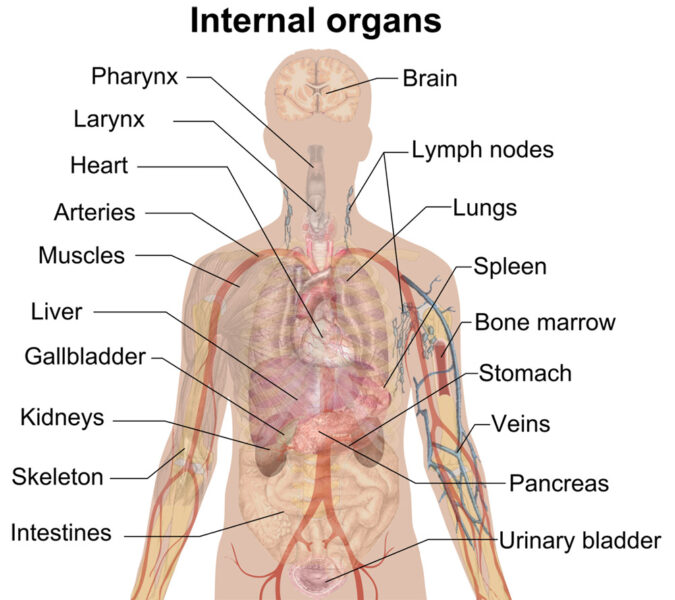
Image: Mikael Häggström, used with permission/public domain
What are the problems with animal use in research?
As explained, there are good reasons to use animals in research but there are also problems connected to it. For example, a famous notion from scientific literature states that “mice are not men”. [1] This means that animals and humans share similarities but also many differences. Animals may digest, absorb, or metabolize compounds very differently to humans. Therefore, you cannot directly transfer all findings from animals to humans. A substance found to be harmless in an animal might still be toxic to humans and vice versa. For example, did you know that chocolate is not toxic for humans (although too much of it might give you a stomach ache!), but for dogs, one ingredient of chocolate called theobromine can be very toxic. Animal use in research is also very costly: the animals need suitable shelter, food, and care, even if the experiment has not started yet. There are strict welfare rules for how laboratory animals are housed and treated, so there is no cheap way of doing this. Finally, animal use in research presents an ethical issue since we know that animals can experience pain and distress. Therefore, animal use in research is tightly regulated in the EU and constantly reviewed by local authorities like Committees on Animal Research and Ethics.
To increase laboratory animal welfare, the EU passed Directive 2010/63/EU, which specifies that animal experiments should only be performed when a scientific question cannot be answered by any other means. Local committees and authorities ensure that this directive is implemented. The directive follows the scientific concept of the 3Rs, which was defined in 1959 by the British scientists Russel und Burch.[2] Therefore, scientists must constantly ask themselves whether using animals is really necessary and also prove this to the local authorities. Having an alternative testing method would greatly benefit basic science and toxicology.
What is the 3Rs principle?
3Rs stands for:
- Replace animal models by developing alternative test methods.
- Reduce the number of animals used in research to a minimum by improved experimental design.
- Refine animal experiments to reduce harm and stress to the laboratory animals.
What are the alternatives?
Since simple cell cultures cannot reflect the complexity of an entire tissue, organ, or organism, scientists have started to create models that better reflect reality. These include so-called organoids, which are small 3D aggregates of one or more cell types.
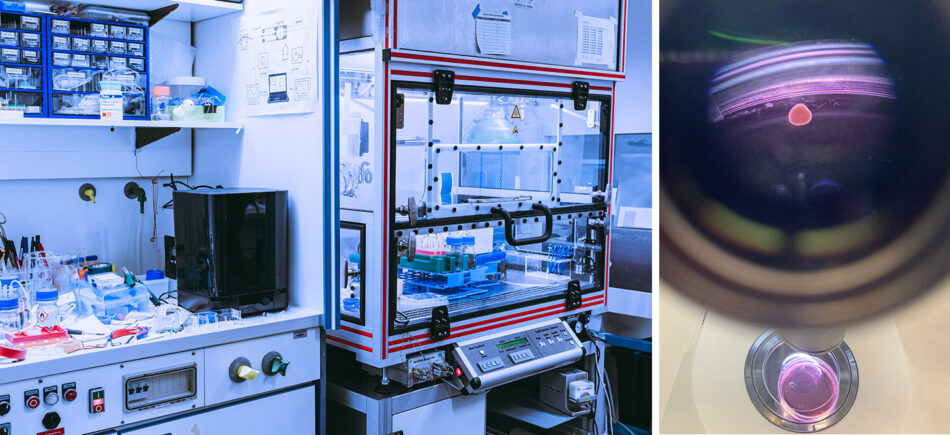
©Norman Ertych
For example, testing a compound used in cosmetics is nowadays performed on 3D skin models. However, some parts are still missing in these kinds of models (figure 1). Your blood and organs have a lower oxygen saturation than the air, which is missed in regular cell culture approaches. Most organs or tissues also encounter mechanical forces: your heart beats to pump blood, your lungs stretch out when you inhale, and your bones encounter mechanical loads whenever you are moving. To simulate these physical aspects of organisms, bioreactors can be used. A bioreactor is a device that can house cells or 3D organoids and allows control of one or more environmental parameters, such as temperature, pH, or oxygen concentration.
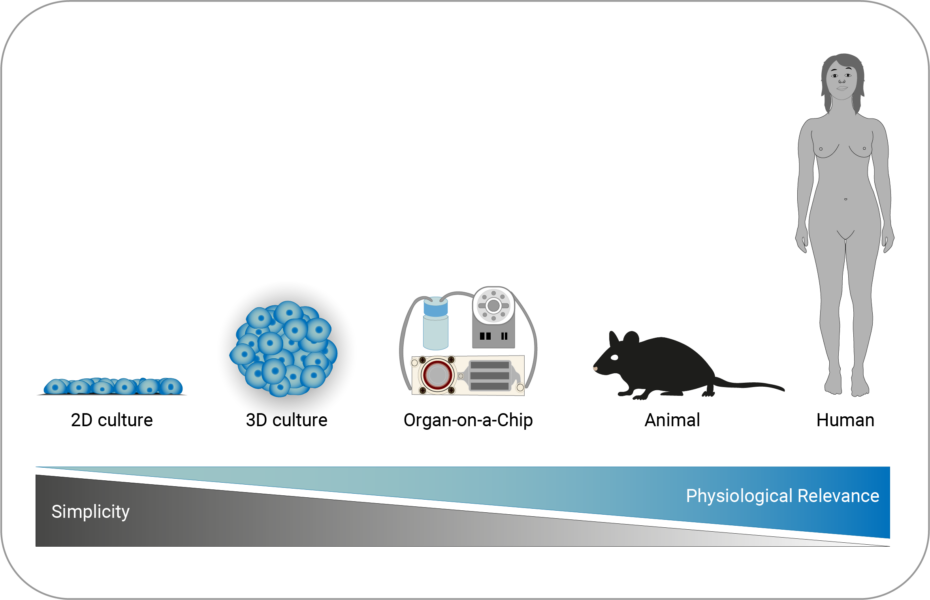
Image courtesy of Lida Ebrahimi, based on a figure originally published in Ref. [3].
Recently, a novel class of bioreactors has emerged: the organ-on-chip. Don’t get confused: you won’t find a miniature lung or bone on a silicon chip soldered to a circuit board. The designation ‘on-chip’ means that the bioreactor is produced by using the same techniques that as for semiconductor electronics. This allows the cost-effective creation of very small structures, for example, channels that are smaller than a millimetre in diameter. These small bioreactors might also be equipped with sensors to monitor the concentration of nutrients or oxygen saturation (figure 2).
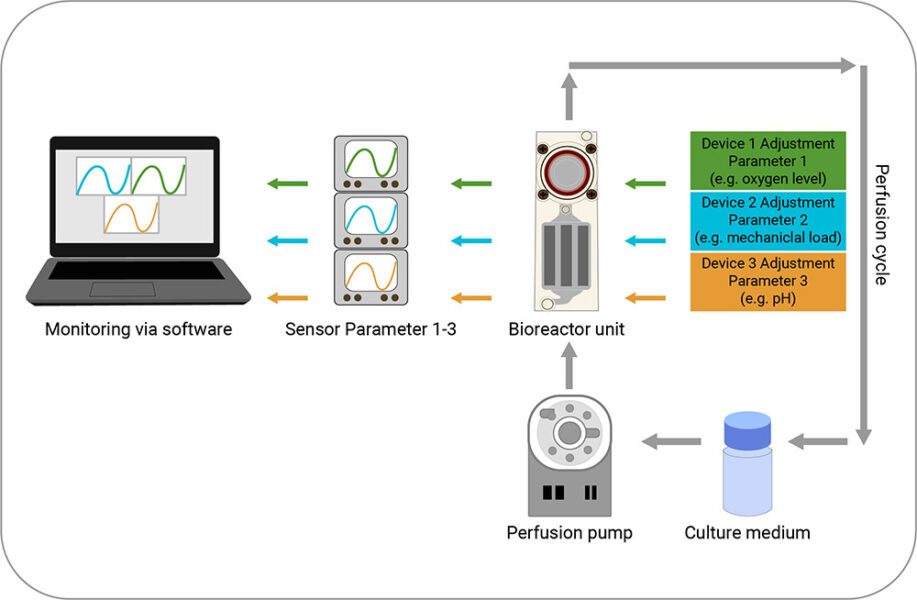
Image courtesy of Lida Ebrahimi
There are also examples where the organ-on-chip provides mechanical stimulation to simulate a beating heart or a breathing lung. The use of porous membranes enables the simulation of tissue barriers such as skin, placenta, or the blood-brain barrier. These are of crucial interest in toxicology, since substances that pass through them might inflict harm on the other side of the barrier. Seeded with the correct cells, organ-on-a-chip devices can provide an environment that is much closer to the real situation than cell culture.
What is organ-on-chip
When talking about an organ-on-chip, scientists actually do not refer to an entire mini-organ, but rather to a multicellular model that simulates certain parts of the tissue and its specific functions. Thus, organ-on-chip models are micro-engineered bioreactors, which harbour living cells to mimic key functional units of organs. The cells in an organ-on-chip can be provided with a constant flow of nutrients, while waste is removed. Furthermore, the devices can be used to control parameters like pH, gas concentration or pressure to enhance the biological relevance of the system.

Copyright: Norman Ertych
It is also possible to connect different organ-on-chip models to simulate the interaction of organs and tissues, these are termed multi-organ-chip (figure 3). There is also the concept of simulating and connecting most of the organs and tissues found in the human body, this idea is called human-on-a-chip.
The possibilities are endless, and scientists have already demonstrated the combination of a bronchial organ-on-chip with a liver-on-chip to investigate the potential toxicity of inhaled substances. [4] More complex biological systems such as the female reproductive system have also been successfully simulated.[5] The combination of various organ-on-chip systems to investigate the crosstalk between different cell types and organs is termed multi-organ-chip.
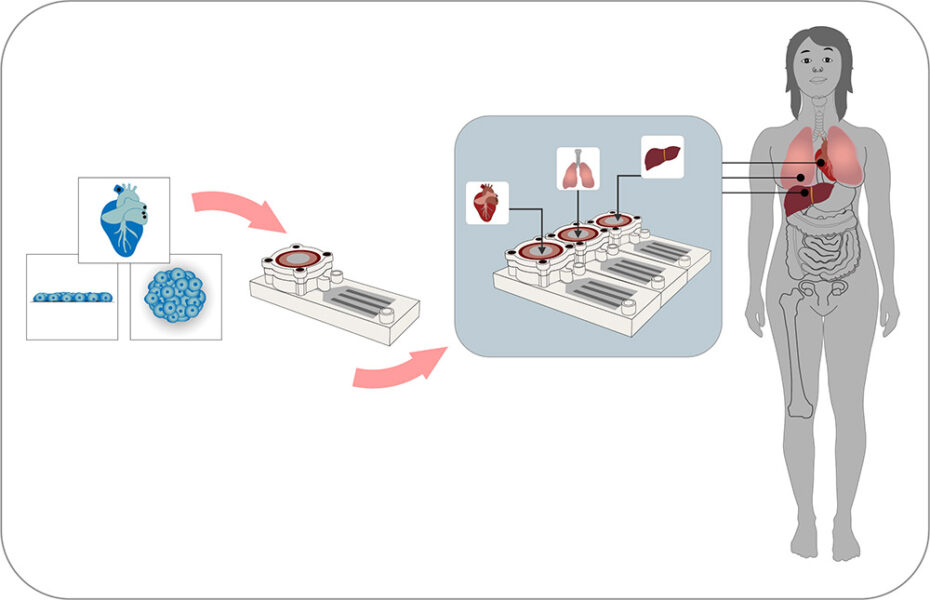
Image courtesy of Lida Ebrahimi
Another important advantage of organ-on-chip systems is that human cells from different individuals can be tested to reflect the natural variation between people, which could enable the development of personalized treatments.
Although the described multi-organ-chip systems allow inter-organ studies, they still cannot accurately simulate an entire organism. It is thus important to understand that this technology will not be able to replace animal use in research in the near future. However, scientists are constantly working to improve the organ-on-chip technology to develop better alternative test systems to animal experiments and to establish models for use in personalized medicine. The majority of researchers have concerns about using animals in research, and we all have to put our efforts into protecting them while trying to find alternative methods where possible.
References
[1] Warren HS et al. (2015) Mice are not men. Proc Natl Acad Sci U S A. 112:E345. doi: 10.1073/pnas.1414857111
[2] Russell WMS, Rex LB (1959) The principles of humane experimental technique. London, Methuen.
[3] Jackson EL, Lu H (2016) Three-dimensional models for studying development and disease: moving on from organisms to organs-on-a-chip and organoids. Integr Biol 8: 672–683. doi: 10.1039/c6ib00039h
[4] Schimek K et al. (2020) Human multi-organ chip co-culture of bronchial lung culture and liver spheroids for substance exposure studies. Scientific Reports 10:7865. doi: 10.1038/s41598-020-64219-6
[5] Xiao S et al. (2017) A microfluidic culture model of the human reproductive tract and 28-day menstrual cycle. Nat Commun 8:14584. doi: 10.1038/ncomms14584
Resources
- A virtual tour of labs involved in the EUROoC International Training Network developing organ-on-chip technology.
- Watch a video explaining organ-on-chip devices by the School of Engineering and Applied Science, University of Pennsylvania.
- Read more about model organisms: Torti F (2017) Life models. Science in School 39: 21-24.
- Learn about drug development stages and organ-on-chip with this drawn explanatory video.
- Read about how drug design is changing: Houlton S (2019) The changing technologies of drug design. Science in School 46:25–28.
Review
This article offers valuable insight into the necessity and difficulties of using animals in scientific research and how scientists have devised new approaches to reduce their use.
Although students may be familiar with the concept of the 3Rs, they may not be familiar with the ways science is helping to achieve it. This article shows how organ-on-chip technology is used to develop alternative test systems to animal experiments.
This article would be perfect for a discussion on the following topics:
– Bioethics: To what extent should the use of animals in research be avoided? (Link to theory of knowledge of international Baccalaureate AND/OR the subject ethical values).
– Progress of science: How reliable are models for scientific development? (Link to chemistry and physics).
– Interdisciplinarity of science: To what extent does the progress of biological research depend on other disciplines such as engineering or mathematics?
Comprehension questions:
Why do scientists have to use animals to develop new drugs?
What are the main concerns when using animals in research?
Explain the 3Rs principle.
What are the main benefits of using organ-on-a-chip? State some limitations of its use.
Germán Tenorio, School Deputy Head – IB Biology Workshop Leader, Alameda de Osuna International School, Spain





